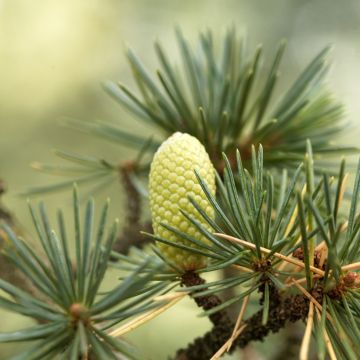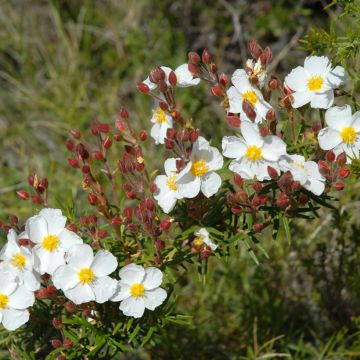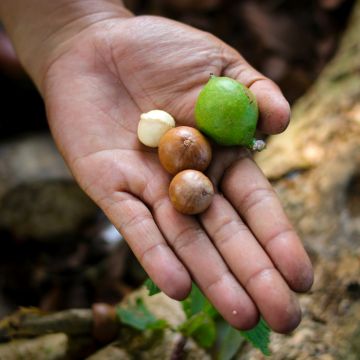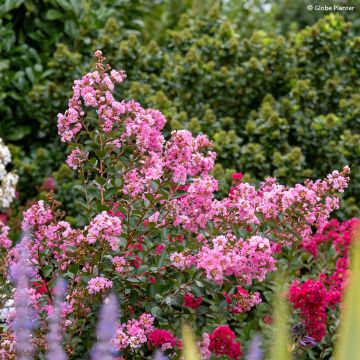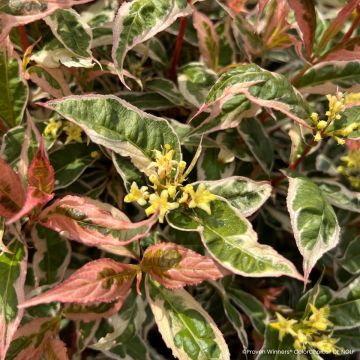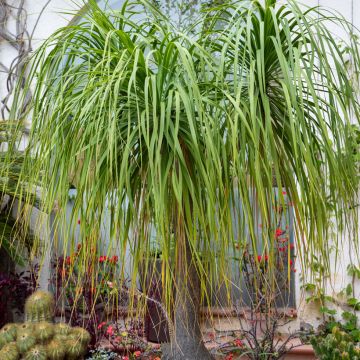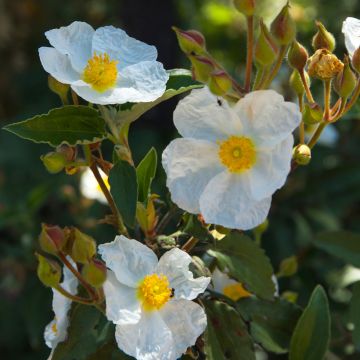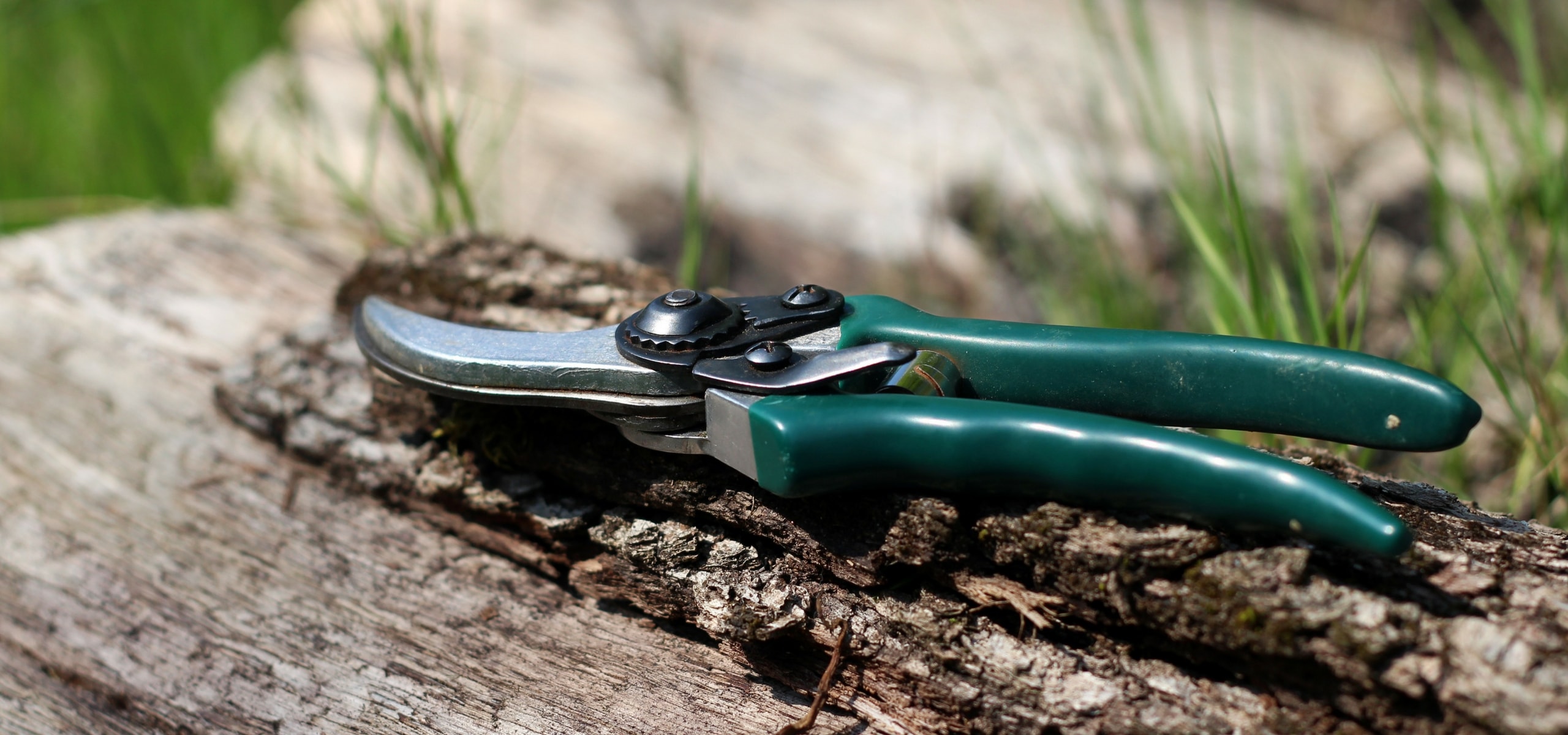
How to prune bushes without hurting them?
It's simple and easy!
Contents
The pruning of bushes is not just a matter of aesthetics. When done correctly, it stimulates growth, improves flowering, prevents diseases, and prolongs the life of your plants. However, pruning a bush is not a trivial act: there are different techniques suited to the nature of the bush, its age, and your objectives, whether it is to rejuvenate it, to aerate it, or to control its development.
In this article, discover two methods for maintaining your bushes: the hard pruning, close to the ground, ideal for giving a second wind to aging specimens, and thinning pruning, which promotes the circulation of air and light within the plant. You will learn when and how to apply them, as well as the species that can tolerate them or, conversely, those that require more caution.
Ready to take out your pruning shears? Follow the guide for vigorous, harmonious, and healthy bushes all year round!
When to prune bushes for optimal growth?
For summer-flowering bushes (on the wood of the year), prune at the end of winter or very early spring, before the end of April, to encourage abundant flowering.
For spring-flowering bushes (on the wood of the previous year), wait until the end of flowering to prune them, unless you are willing to sacrifice the current year’s flowering.
Read also
How to prune early flowering bushesPruning for rejuvenation: how to bring a tired bush back to life?
The total rejuvenation pruning is a radical yet highly effective method to restore vigour to an ageing or bare-based bush. It involves cutting the large branches to a height of 5 to 15 cm above the ground, in order to stimulate the emergence of new shoots from the stump. The weakest or dead branches should be removed by cutting them flush with the ground, leaving only the strongest stems.
Which bushes should be pruned to the ground?
Some bushes respond very well to severe pruning, encouraging vigorous regrowth. The flowering currant (Ribes sanguineum), the ‘Annabelle’ hydrangea (Hydrangea arborescens), the Japanese kerria (Kerria japonica), spiraeas, and the bush mallow quickly produce new floriferous shoots. Perovskia, bush St. John’s wort, forsythia, mahonia, mock orange (Philadelphus spp.), weigela (Weigela florida), hibiscus (Hibiscus syriacus), and the pheasant tree (Leycesteria formosa) also tolerate this pruning well, which stimulates their growth and flowering.
Conversely, other bushes do not tolerate being cut to the ground, as they do not easily regenerate new shoots from old wood. This is the case with the Japanese maple, abelia, daphne, and witch hazel, which prefer light pruning to maintain their structure. The contorted hazel (Corylus avellana ‘Contorta’) loses its charm if pruned too severely, while decorative viburnums like Viburnum plicatum, Viburnum carlesii, or Viburnum calcephalum may fail to flower properly after a drastic cut.
How to do it?
Make a clean, angled cut, about 5 mm above a bud facing outward. This angle prevents rainwater from pooling on the cut, thus limiting the risk of diseases.
Be cautious about the height of the cut:
- If you cut too close to the bud, you risk damaging it.
- If you leave a “stump” that is too long, it will dry out unnecessarily and may become a breeding ground for diseases.
A special case: lavender
Never cut an old lavender branch if you do not see any buds or young shoots near the base (otherwise, there will be no regrowth). Only a few varieties easily produce such buds and can therefore be rejuvenated regularly. This includes ‘Hidcote Blue’. Other varieties age poorly and should be replaced every three to five years.
Discover other Shrubs
View all →Available in 0 sizes
Available in 1 sizes
Available in 1 sizes
Available in 1 sizes
Available in 1 sizes
Available in 1 sizes
Available in 1 sizes
Available in 1 sizes
Available in 1 sizes
Available in 1 sizes
Pruning for thinning: why and how to aerate your bushes?
It is often said that “a swallow should be able to pass through the bush,” a figurative expression from the ancients that perfectly illustrates the goal of thinning: allowing light and air to circulate freely through the branches. This technique aims to aerate the structure of the bush, thereby promoting better plant health by reducing the risk of fungal diseases and stimulating harmonious growth.
Which bushes to thin?
Thinning is particularly suitable for decorative flowering bushes and those with dense foliage. Among them are flowering cherry trees (such as Prunus serrulata), laburnum (Laburnum), and broom (Cytisus), whose branches easily intertwine. The coloured wood dogwood (Cornus), valued for its colourful stems in winter, benefits from regular thinning to maintain vibrant young shoots. Weigela, lilac (Syringa vulgaris), as well as azaleas and rhododendrons, gain vigour after this pruning, encouraging a more generous flowering. Photinia, appreciated for its bright red foliage in spring, and the Japanese quince (Chaenomeles japonica), with its striking flowers, also benefit from aeration pruning to develop better.
How to proceed?
Thinning involves removing entire branches by cutting them at their point of insertion on a main branch or directly at the base of the bush. The focus should be on:
- Old branches, identifiable by their dull and cracked bark, often less productive in flowers or foliage.
- Poorly oriented branches, which cross or rub against others, creating points of weakness.
- Too thin shoots, weak or lacking vigour, which do not contribute to the overall structure.
- Dead or broken branches, which are true entry points for diseases.
Make clean and precise cuts, as close as possible to the point of attachment, without leaving stubs. These small residual pieces of wood tend to rot, becoming potential breeding grounds for fungi and other pathogenous agents.
Mistakes to avoid when pruning bushes
- Prune at the right time according to the flowering.
- Respect the specific needs of each bush.
- Use clean and well-sharpened tools.
- Make clean and precise cuts without stubs.
- Aerate the bush by removing dead or poorly oriented branches.
To go further: our tips for successful pruning
To deepen your knowledge of bush pruning and avoid harming them, I invite you to consult the following articles on our site:
-
Pruning fruit trees, bushes and roses: 10 mistakes to avoid
This article details common mistakes to avoid when pruning to preserve the health of your plants. -
How to prune and maintain evergreen bushes?
Discover tips for correctly pruning your evergreen bushes and maintaining their beauty throughout the year. -
Pruning spring-flowering bushes: when and how?
Learn how to prune your spring bushes at the right time and in the right way to encourage abundant flowering. -
When and how to prune bush roses and bushes?
This article provides specific techniques for pruning roses, essential for generous flowering. -
Gentle or reasoned pruning of trees
Discover the principles of gentle pruning, a respectful method for maintaining your trees without damaging them.
- Subscribe!
- Contents
































